The demand for conventional plastics substitutes that are eco-friendly has increased in this era where environmental sustainability is of paramount interest. One such promising material is Polylactic Acid (PLA), a thermoplastic which is biodegradable and bioactive obtained from renewable resources such as corn starch or sugarcane. This blog post will explore PLA in depth, providing insights into its modes of production, advantages, uses and possible setbacks. If we know the intricate details of this inventive plastic, then we can have a deeper understanding on how it would contribute towards a more sustainable future. This article seeks to explore different dimensions of PLA and its potential of transforming the plastics industry.
What is PLA and How is it Made?
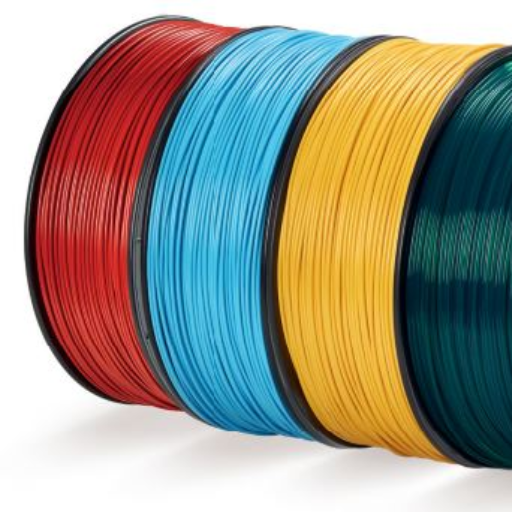
Image source: https://holm-holm.com/
Polylactic Acid (PLA) is a thermoplastic that naturally decomposes as well as being bioactive derived from corn starch or sugar cane among other renewable things. Lactic acid is produced through the fermentation process of these raw materials to make PLA. During ring-opening polymerization the lactic acid goes through polymerization whereby long polylactic acid chains are formed. By this method, fairly versatile and biodegradable plastic capable of being shaped into various forms emerges as an alternative to conventional petroleum polymers with implications for environment sustainability purposes.
Understanding PLA and Its Origins
Polylactic Acid (PLA) is produced from fermenting renewable resources such as sugarcane or corn starch. The first step of this process entails extracting carbohydrates from these plants, followed by their fermentation to produce lactic acid. This polymerization process involves converting the lactic acid into long polymer chains by ring-opening polymerization with monomer molecules bonding together.
The Process of Producing PLA from Lactic Acid
Resulting PLA is a versatile biodegradable polymer that can be used as an alternative to petrol based plastics in a variety of applications including packaging materials and medical devices because it can decompose in composters and it is compatible with organic matter.
The production of Polylactic Acid (PLA) from lactic acid is well defined and comprises several steps. Initially, carbohydrates derived from renewable resources such as corn starch or sugarcane undergo fermentation to yield lactic acid. This lactic acid should be free from any impurities that may interfere with the process of polymerization.
Ring opening polymerization comes next after purification. It occurs when purified lactic acid is heated so that its molecular bonds are broken and reassembled into long chains forming the PLA polymer. A catalyst assists in joining monomers into polymers while increasing efficiency thus resulting to high-molecular-weight PLA.
Finally, the melted and solidified PLA gets converted into pellets which can be further processed using standard plastic manufacturing techniques like extrusion, injection molding or 3D printing to get various shapes and forms. In comparison to conventional petroleum-based plastics, this bio-based and biodegradable plastic has lower environmental impacts.
Different Types of PLA
There are various types of polylactic acid (PLA) with each designed to meet specific application needs and production processes.
- Standard PLA: Also referred to as universal PLA, this particular type is widely adopted in 3D printing, packaging manufacture, and throw-away objects like spoons and cups. Its special features include simplicity in use, high dimensional precision and smooth finish in the context of 3D printing.
- High-Temperature PLA: Additional processing is done on this variant to enhance its resistance to heat which makes it applicable for applications that require higher degree of thermal stability. Automotive industry and hot-fill packaging applications usually make use of high-temperature PLA.
- Flexible PLA: Designed for dynamic products requiring flexibility and durability, Flexible PLA can be found in wearables or flexible connectors and custom-made items. This kind of PLA keeps its biodegradable properties but also becomes more elastic and toughened at the same time.
These kinds of PLAs cater for a range of industrial as well as consumer needs hence increasing the possible uses of this green material.
What are the Properties of PLA?
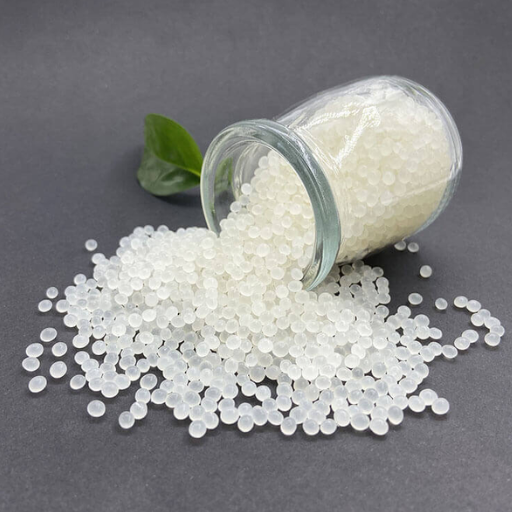
Polylactic Acid (PLA) has several attributes that can make it the preferred material for many uses. To begin with, PLA biodegrades and composts under industrial composting conditions which minimizes its effect on the environment. It has a high tensile strength and stiffness comparable to traditional plastics like PET or PS. Also, it is transparent and glossy thus being ideal in making packaging materials among other aesthetic issues. Furthermore, it has a low melting point hence facilitating lower temperature processing. However, it is typically more brittle than other types of plastics although this can be adjusted by employing specific formulations such as Flexible PLA.
Mechanical Properties of PLA
Polylactic Acid (PLA) exhibits mechanical properties that closely resemble petroleum-based plastics, thereby making it popular in different sectors. The ultimate tensile strength of PLA ranges from 37MPa to 50MPa which is similar to Polystyrene (PS) and Polyethylene Terephthalate (PET). Its Young’s modulus ranges between 2.7 GPa to 16 GPa indicating high rigidity. Similarly, the elongation at break for various types of PLA spans from 4-10% implying modest ductility. In any case, impact strength in range of 2.0 -16 kJ/m² which is significantly low though more brittle compared to other thermoplastics generally characterizes PLA-materials. All this means that the best fit for PLA will include applications where toughness should be combined with relative high stiffnesses as in packaging, surgical implants through three dimensional printing techniques and disposable products ensuring sustainability also.
Thermal and Physical Properties of PLA
It is the combination of practicality and sustainability that makes polylactic acid (PLA) a remarkable material in terms of its thermal and physical characteristics. PLA’s glass transition temperature (Tg) ranges from 55 to 60°C while its melting temperature (Tm) is between 150 and 180°C only. The range of these temperatures indicates that PLA will find use in applications where it does not require higher levels of heat resistance. Its specific heat capacity is about 1.8 J/g°C, which shows the amount of heat that can be absorbed or released by the material.
On the other hand, PLA has a density of approximately 1.25 g/cm³ which is almost similar to many other common plastics like PET. Even though this material has good barrier properties against moisture and gases, it is less effective than multi-layer barriers used in high-performance packaging. Moreover, natural glossiness and clearness found on PLA are useful for aesthetic purposes such as food packages and disposable cutlery.
However, the fact that PLA can degrade under industrial composting conditions contributes to its green nature. Nevertheless, exposure to humidity or temperature can affect its performance thereby making it unsuitable for long-term applications within changing environmental circumstances. Yet still, with respect to thermal as well as physical qualities mixed along with environmental profits, polylactic acid remains an invaluable substance for sustainable industrial activities.
Barrier Properties of PLA
But, Polylactic Acid (PLA) is good in terms of having a barrier that can be applied to different forms of packaging. In comparison to synthetic polymers such as PET and PE, PLA has quite moderate barriers for various gases like O2 and H2O. Despite the fact that studies have shown that PLA’s oxygen transmission rate (OTR) is lower than some petroleum-based plastics, it is not as effective as EVOH or PVDC which are specialized in providing exceptional barriers.
This implies that more moisture passes through over time because the water vapor transmission rate (WVTR) of PLA is also high. This issue can be reduced by means of lamination or blending with other materials increasing its barrier performance. For instance, inclusion of nanocomposites or formation of multilayered structures enhance the capability of PLA to protect contents from moisture and permit diffusion of gas.
Additionally, while pure PLA might not match the high-performance barrier qualities required in some packaging situations, its biocompatibility as well as recyclability are inherently an added advantage. The material science developments continue to expand the application range for PLA into higher barrier applications through ongoing R&D efforts aimed at balancing environmental attributes against improved functionalities.
How Biodegradable is PLA?
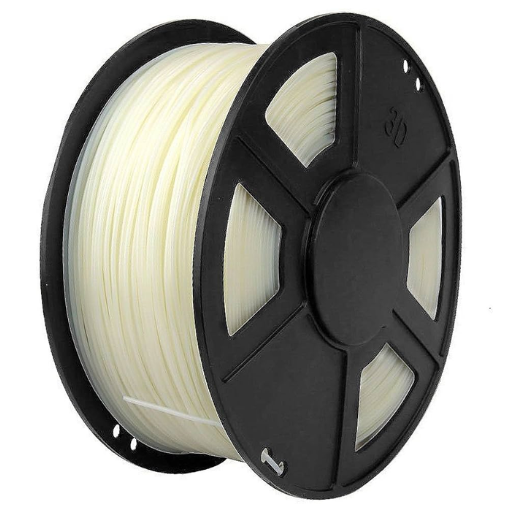
PLA, also known as Polylactic Acid, is considered biodegradable provided specific conditions are met. For PLA to be broken down, it requires an industrial composting facility with temperatures around 58°C (136°F) and steady moisture levels. In such settings it takes PLA a period of one to six months to decompose into water, carbon dioxide and organic matter. Nonetheless, in natural environments like soil or water the process is slow and may take several years. The rate of biodegradation is influenced by temperature, microbial activity and thickness of material Necessarily although its decomposition is best accomplished under controlled industrial conditions yet PLA still remains more degradable than typical plastics.
Biodegradable Nature of PLA
PLA or polylactic acid can only be degraded in approved facilities designed for high temperatures maintenance at an average humidity level of 58 °C (136 °F). Such places allow for the complete degradation of PLA into water, carbon dioxide and biomass within one to six months approximately from the time when they were first exposed to the composting environment. Conversely, its decay rate is low in normal conditions like ground or seawater since this may go on for a number of years depending on environmental factors such as temperature and thickness of products. This makes it possible that there are ways which can help make plastics less harmful to the environment given that PLA offers better alternatives if not its closest use is in well operated composting sites.
Comparing PLA with Other Biodegradable Polymers
Many things are considered when comparing PLA to other biodegradable polymers such as Polyhydroxyalkanoates (PHAs) and Polybutylene Succinate (PBS). PHAs, like PLA, can be generated from renewable resources and they are biodegradable in both industrial composting facilities and natural environments. However, PHAs differ from PLA in that they degrade faster in the natural environment hence more adaptable for different waste management scenarios. Conversely, PBS has better mechanical properties and thermal stability but it requires a tailored degradation medium similar to PLA. On the cost front, PLA is generally cheaper than its counterparts given its simpler production process and well-developed infrastructure. Although highly popular as a biodegradable polymer, there are specific applications or environmental conditions under which PHAs or PBS have some advantages over PLA.
Environmental Impact of PLA
Various perspectives are needed to consider the environmental impact of Polylactic Acid (PLA), including production, use, and disposal. PLA is made from renewable resources like corn starch or sugarcane and hence its production usually results in lower greenhouse gas emissions and reduced carbon footprint as compared to conventional petroleum-based plastics. Nevertheless, there are concerns about land use and competition for food supply arising out of the agriculture processes that go into these crops’ cultivation.
Compostability in industrial facilities makes the major benefit of PLA during its lifecycle as it significantly cuts down on landfill waste. Nevertheless, decomposing slowly under natural conditions such as in soil or marine waters may challenge any attempt to remediate it effectively without controlled composting systems.
Also, the actual environmental benefits derived from using PLA highly rely on facilities for proper disposal. Lack of availability of industrial composting plants will mean that PLA continues remaining in environment for an extended duration similar to traditional plastics. Therefore, even though PLA has emerged as a promising alternative towards conventional plastic with its renewable sources and low emission during manufacture, maximizing its eco-friendliness necessitates ready organic waste processing units that can be easily established.
What are the Primary Applications of PLA?
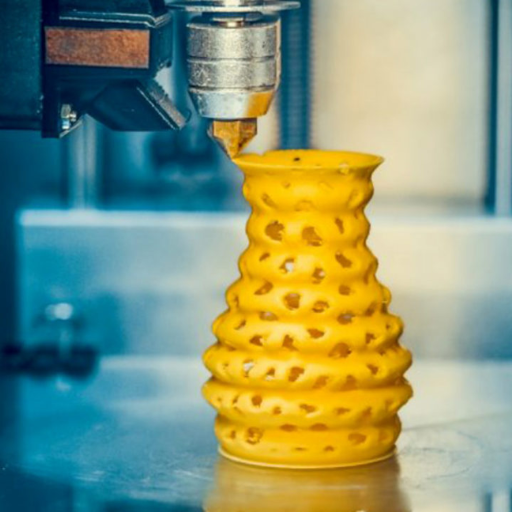
Polylactic Acid (PLA) finds extensive use in countless industries because of its versatile nature and environment friendliness. The primary uses of PLA are as follows.
- Packaging: It is actually used in making food packaging materials like containers, wrappers or films majorly due to biodegradability and safety for food contact.
- Textiles: PLA fibers provide a sustainable alternative to conventional synthetic fibers used in the textile industry to make eco-friendly fabrics and clothing.
- Disposable Products: With industrial composting conditions, PLA can be used to produce disposable items such as cutlery, plates, and cups that will ultimately break down.
- Medical Devices: In medical applications such as sutures, stents, drug delivery systems etc. where it finds use due to its biocompatibility
- 3D Printing: PLA is a favorite material for 3D printers because of its ease of use and lower environmental impacts compared with petroleum-based plastics.
PLA in Food Packaging
PLA (Polylactic Acid) is now a popular material in the food packaging industry based on its compostability and reduced ecological impact. Commonly, it is used for the making of clamshell containers, trays or films. These can be used to ensure safety of food as well as being friendly to nature. The adoption of PLA by companies for packaging applications has been on the rise in line with increasing consumer demand for sustainable solutions according to recent industry insights. In addition, developments in PLA formulations have enhanced its thermal and moisture barrier properties allowing it to be applicable across a wider range of foods. However, even though PLA packaging has many advantages, effective composting requires industrial composting facilities that are accessible.
PLA in 3D Printing
In 3D printing, PLA (Polylactic Acid) filament stands out due to its printability, biodegradability and lower environmental impacts compared to other petroleum-based plastics. It usually prints at relatively low temperatures between 180°C and 220°C thus minimizing the risk of warping and giving a smooth surface finish. This is one reason why hobbyists prefer PLA since they don’t need to use a heated bed when printing small parts with fine details while professional artists also appreciate this feature about the material. Besides, during heating process it emits sweet smelling fumes that are user-friendly compared other substances used in 3D printers. There are various applications where PLA’s strength and rigidity come into play; however it must be noted that it is more brittle compared with ABS which is another common thermoplastic material. Although not chemically resistant and having lower melting point than many thermoplastics therefore unsuitable for high temperature uses; the fact that it is ecologically sound coupled with ease of printing makes this material continue being adopted widely by all sizes of users within 3D-printing domain.
PLA in Medical and Engineering Applications
Polylactic Acid (PLA) is extensively used in the field of medicine and engineering because it is biocompatible, biodegradable and has versatile properties. In the medical industry, PLA is widely used for making surgical implants, sutures and drug delivery systems. Its characteristic of natural degradation into lactic acid that can be metabolized by living organisms makes it suitable for temporary implants. PLA based implants provide structural support for bone regeneration and are gradually absorbed thus eliminating need for a second surgery.
It enables ease of processing which makes PLA a perfect material to be used in prototyping as well as producing components with complex geometries. It is also beneficial in automotive parts, consumer electronics fabricated PLAs and even aerospace components, due to its ability to mould easily to precise shapes. This makes it easier to work with than other plastics such as ABS that have traditionally dominated the use of 3D printing technologies in engineering applications. The environmental benefits and mechanical properties of PLA continue to drive its innovation and adoption in both the medical and engineering fields.
What are the Pros and Cons of Using PLA?
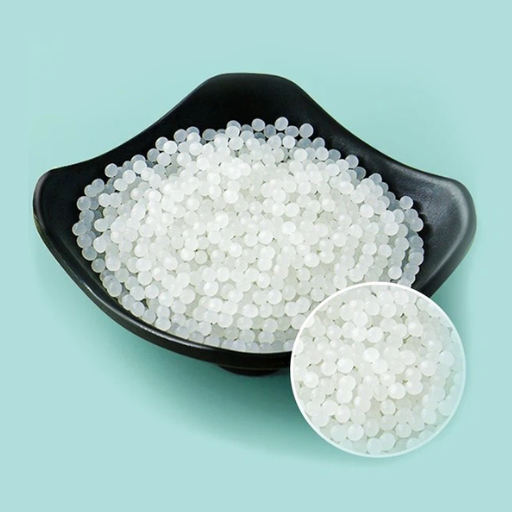
Advantages of PLA
- Environmental Friendliness: PLA is an alternative to petroleum-based plastics that comes from corn starch or sugarcane, which are renewable sources. It does not produce much greenhouse gas.
- Biodegradability: Under industrial compost conditions, PLA can disintegrate into carbon dioxide and water in a few months thus considerably shrinking its environmental footprint.
- User-Friendly Printing: For 3D printing, PLA has low property of deformation and high print bed adhesion making it the right material for this process. This makes it suitable for both beginners as well as experts who want to achieve fine prints.
- Harmlessness: PLA materials are recognized as safe for humans and animals hence they can be used in food packaging materials or medical products where biocompatible items are required.
- Appearance: Different colors such as transparent ones among other finishes are also available depending on choice of user, which offers decorative designs of choice using PLA materials.
On the whole, these attributes; sustainable origin of raw materials, degradability and simplicity in handling make PLA a good option where there is a compromise between functionality and eco-friendly operations.
Disadvantages and Limitations of PLA
- Limited Heat Resistance: The low melting point of PLA, around 60-65°C (140-149°F), restricts it from being used in high temperature areas. Objects made of the material could lose shape or become weak under high temperatures thus not ideal for making things such as hot beverage containers and automobile parts.
- Mechanical Properties: On the other hand, even though PLA is stiff and boasts of good tensile strength, it is more fragile than other thermoplastics like ABS. This brittleness makes it prone to cracking or breaking when subjected to stress or impact thereby limiting its suitability for applications that require durable and flexible materials.
- Hydrolytic Degradation: PLA can be broken down by moisture over a period of time. Such degradation through hydrolysis can result in compromised strength hence rendering it inappropriate for applications in wet conditions on an extended basis or products requiring protracted contact with water.
- Industrial Composting Requirement: Nevertheless, while PLA is biodegradable, it requires special composting facilities found mainly in industries to disintegrate completely. Accordingly, this indicates that it does not decompose rapidly or fully within settings like landfills or domestic compost piles. Because industrial composting plants may not be available everywhere, therefore PLA may stay in the environment like normal plastics.
- Chemical Resistance: In relation to others types of plastics, PLA has lower resistance against chemicals. It can also be attacked by solvents including certain oils and acetone rendering less useful especially for chemical or industrial purposes.
Future Directions and Improvements
To make PLA more practical and sustainable, many future directions are being explored for improvement:
- Temperature Resistance: The thermal stability of PLA is being enhanced by incorporation of additives and blending with other polymers. This can open up the application of PLA to high-temperature applications such as automotive parts or hot beverage containers.
- Mechanical Strength: Making it more flexible and resistant to impact in order to overcome brittleness in the PLA is currently been researched on. These include plasticizing, copolymerization, adding reinforcing fiber among others that can yield a tougher material applicable over a wider range.
- Hydrolytic Stability: Wetting resistance of PLA has also been identified as another major area to be addressed. Besides altering the structure of this polymer, reducing hydrolytic degradation by blending it with other materials would enhance its use in moist conditions for an extended period of time.
- Biodegradability: Another focus area is the advancement of biodegradation processes. An environmentally friendlier approach would be developing a kind of PLA that will decompose faster under home composting and natural conditions hence improving its environmental performance as well as addressing constraints associated with industrial composting requirements.
- Chemical Resistance: The chemicals used can improve their resistance toward Polymer’s chemical resistance can possibly be increased through copolymerization or surface treatment techniques. Its uses would broaden across sectors making it more adaptable in industries and chemicals.
These improvements aim at turning PLA into a durable, versatile, and eco-friendly material thereby contributing to its acceptance as a green alternative to traditional plastics.
How PLA Composites and Blends Enhance Material Properties?
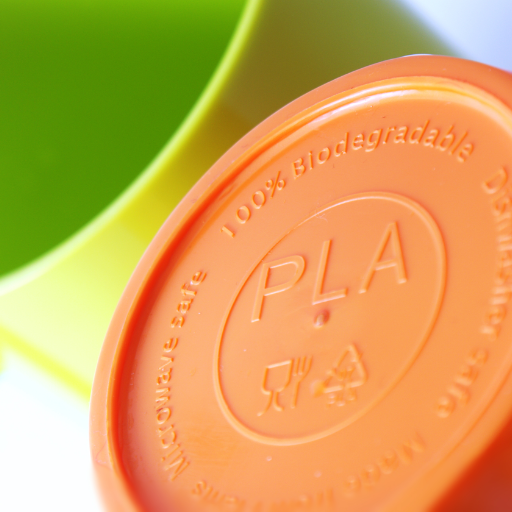
Adding other substances to PLA enhances its material properties in a big way. This is because the limitations of PLA can be overcome by combining it with other materials like blends and composites. For instance, when fibres such as carbon or glass are incorporated into PLA, mechanical strength and durability increase thereby making the composites suitable for use in more demanding fields. Furthermore, blending it with other polymers gives it better flexibility, impact resistance and thermal stability. Moreover, such combinations may improve its hydrolytic stability and chemical resistance leading to wider applicability under different environmental conditions. Therefore, these improvements make it possible to design PLA articles that are tailored to perform certain tasks thus increasing their practicality within various sectors.
Overview of PLA Composites
Properties of PLA are enhanced by formation of PLA composites that integrate them with reinforcing fibers or fillers. These usually include glass fibers, carbon fibers and natural fibers like hemp and flax in combination with PLA. Incorporation of these materials leads to increased mechanical strength, durability as well as rigidity hence making the material useful for a wide range of applications.
- Mechanical Enhancement: When combined with fibres, like those made from carbon or glass, which are integrated into the PLA matrix; this dramatically enhances its tensile strength and rigidity. For example automotive and aerospace industries always go for high strength-to-weight ratio this makes glass or carbon fibre reinforcement suitable for such industries.
- Thermal Stability: Generally, PLA composites have more thermal stability than neat PLA because they do not degrade easily at higher temperatures. This is particularly important in applications requiring thermal durability because the additives help improve the heat resistance of PLA.
- Environmental Benefits: Apart from improving physical properties, natural fibres such as hemp or flax also promote biodegradability thereby reducing adverse impacts on the environment introduced by traditional plastics. Bio-based substitutes derived from plastics made from plants have begun to emerge in contrast to petroleum sourced materials.
Thus, integration of pure PLA along with other filler materials can effectively address many shortcomings associated with pure polymer form since it becomes more desirable for both commercial and industrial uses.
The Role of PLA Blends
In order to make it more versatile and useful, PLA blends are very important. This may include blending PLA with other biodegradable polymers such as Polyhydroxyalkanoates (PHA), Poly(butylene adipate-co-terephthalate) (PBAT), polycaprolactone (PCL) which improves mechanical properties, toughness and flexibility of the blend. This makes them suitable for applications that require enhanced performance characteristics including flexible packaging, agricultural films and biodegradable cutlery.
Furthermore, mixing it with other polymers can help in addressing issues of brittleness, slow crystallization rate as well as its thermal limitations thereby creating materials that perform better in a wide range of environmental conditions. As material development is increasingly influenced by sustainability, PLA blends have emerged as an important strategy for developing eco-friendly products without sacrificing performance.
PLA Nanocomposites for Advanced Applications
By incorporating nanosized fillers into PLA, its inherent properties are improved thus making PLA nanocomposites to be a significant advancement in biodegradable polymers. By the incorporation of materials like nanoclays, carbon nanotubes and graphene, PLA nanocomposites can achieve improved thermal stability, mechanical strength as well as barrier properties. These improvements enable the products to be used in automotive components and aerospace materials among others. Moreover, the small size of the fillers helps to maintain biodegradability of PLA thereby ensuring that the environmental benefits of base polymer are not compromised. The potential for PLA nanocomposites is expanding and it holds substantial promise for sustainable material innovation in different areas characterized by high demand.
Frequently Asked Questions (FAQs)
Q: What is Polylactic Acid (PLA) and how is it made?
A: Polylactic Acid (PLA) is a biodegradable polymer derived from renewable resources like corn starch or sugar cane. It is synthesized through the fermentation process of lactic acid monomers, followed by the polymerization of these monomers through processes like direct condensation of lactic acid or ring-opening polymerization. PLA is made through these steps to form a versatile bioplastic used in various applications.
Q: What are the advantages and disadvantages of PLA plastic?
A: The advantages of PLA plastic include its biodegradability, reduced carbon footprint, and the use of renewable resources in its production. It has good mechanical and thermal properties for many applications. However, the disadvantages include its relatively lower impact strength compared to traditional plastics, poor thermal resistance, and the potential for degradation in high-temperature environments. Although PLA is promising, these limitations need addressing through further research and development.
Q: What are the common uses of PLA?
A: PLA is used in various applications due to its versatility and sustainability. Common uses include packaging materials, disposable cutlery, medical implants, and 3D printing filaments (PLA filament). Its properties make it suitable for use in these areas, contributing to the reduction of plastic waste.
Q: How does the production of PLA contribute to environmental sustainability?
A: The production of PLA contributes to environmental sustainability by using renewable resources and producing a biodegradable product that decomposes under industrial composting conditions. This reduces the dependency on fossil fuels and decreases plastic pollution, making PLA an eco-friendly alternative to conventional plastics.
Q: What are the thermal properties of PLA?
A: The thermal properties of PLA include a melting temperature around 150-160°C and a glass transition temperature between 60-65°C. These properties make PLA suitable for various temperature-sensitive applications, although its lower thermal resistance compared to petrochemical plastics may limit its use in high-temperature environments.
Q: How does the mechanical strength of PLA compare to other plastics?
A: The mechanical properties of Polylactic Acid show that PLA has good tensile strength and modulus, making it comparable to some petrochemical-based plastics. However, the impact strength of PLA is generally lower than that of traditional plastics like polypropylene or polyethylene. This makes it less suitable for applications requiring high impact resistance, though its strength can be enhanced through blending of PLA with other materials.
Q: What are the potential applications of PLA beyond packaging?
A: Beyond packaging, PLA has potential applications in fields such as medicine (e.g., biodegradable sutures, implants), agriculture (e.g., biodegradable plant pots), and textiles. The versatility of PLA polymer, combined with ongoing research into improving its physical and mechanical properties, broadens its scope of use across numerous industries.
Q: How important is the molecular weight of PLA in determining its properties?
A: The molecular weight of PLA is crucial in determining its physical and mechanical properties. Higher molecular weight PLA typically exhibits better mechanical strength, thermal resistance, and impact strength. Adjusting the molecular weight during PLA production allows manufacturers to tailor the material’s properties to specific needs and applications.
Q: Can PLA be blended with other materials to enhance its properties?
A: Yes, blending PLA with other materials is a common method to enhance its properties and overcome some of its limitations. For example, the blending of PLA with plasticizers, elastomers, or reinforcing agents can improve its flexibility, toughness, and impact strength. Such modifications expand the usability of PLA in a wider range of applications.






